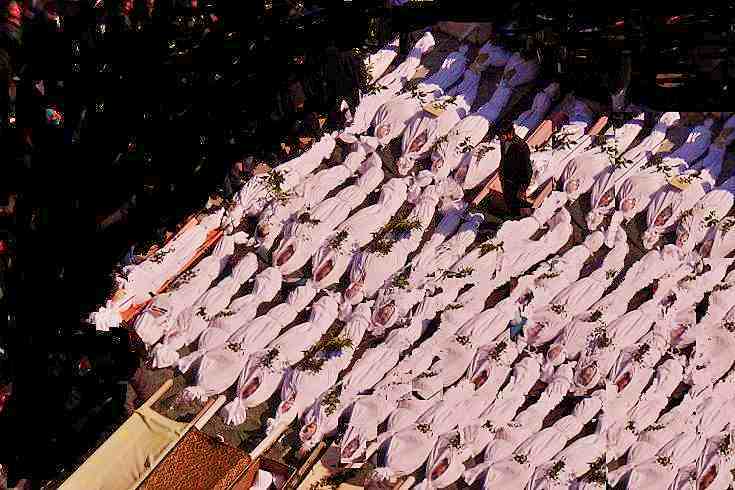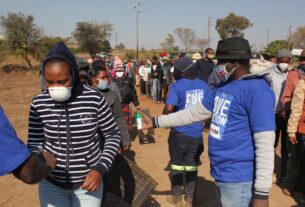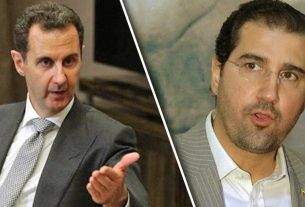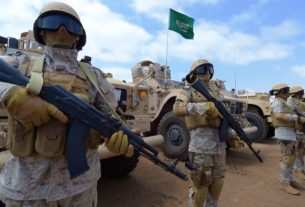Fri 26 August 2022:
A probe supported by a British advocacy group into attacks by Syrian government forces that left 700 people dead in Darayya, Syria 10 years ago has revealed Iranian and Hezbollah militias’ involvement.
A team of investigators from Syria, or of Syrian descent, backed by the Syrian British Consortium (SBC) advocacy group, tracked down survivors and witnesses from around the world to analyze their testimonies, and published their findings on Thursday, hoping that UN bodies and other legal institutions use the report to prosecute some of those responsible.
Lawyer Dr Yasmine Nahlawi has led an investigation by the Syrian British Consortium, a UK-based advocacy group, into what happened.
“The over 700 people who were killed included 63 children and 36 women. Also, among the men rounded up and executed, some were in their pyjamas and slippers,” she says. “These were not military targets, this was an attack directed against civilians.”
Soon afterwards, survivors posted photos and videos online of what appeared to be mass graves full of civilians, but these were hard to verify at the time. Estimates of the number of people killed varied widely, from 100 to more than 500.
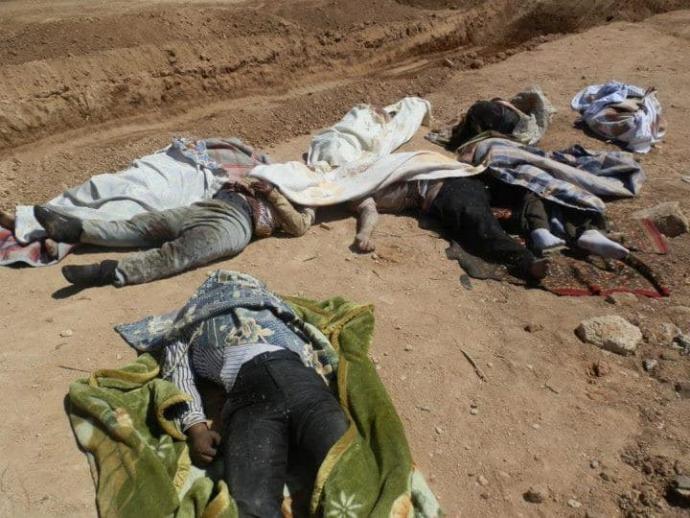
The report said investigators were able to identify government forces and Iranian and Hezbollah militias involved in the attacks by their uniforms, insignia and weaponry, including types of tanks, as well as how members of the units addressed each other.
The team also identified some individuals responsible. “This investigation reveals that the Assad Government and supporting Hezbollah and Iranian militias engaged in a systematic attack against the civilian population of Darayya from August 20 to 26, 2012”, as they advanced against the town from multiple directions and indiscriminately attacked neighborhoods by shelling and airstrikes, and deliberately targeted hospitals.
يقول علي عزت بيجوفيتش: “عليكم أن لا تنسوا المجزرة مهما حصل. لأن المجزرة التي تُنسى تتكرر”.
رحم الله شهداء داريا وشهداء سوريا#الذكرى_العاشرة_لمجزرة_داريا pic.twitter.com/04IEIQPr5w
— تمام أبو الخير (@RevTamam) August 26, 2022
Reports regarding the involvement of Iranian troops grew after August 5, 2012 (two weeks before the Darayya massacre), when a Free Syrian Army brigade captured 48 active-duty members of the Iranian Revolutionary Guard in the southeastern part of Damascus, a few kilometers away from Darayya.

One witness told researchers that the scene at the hospital after one attack was “horrific, like doomsday”. “Everyone was looking for their loved ones, trying to get them treatment. People were running and hiding.”
Dr Nahlawi’s team has concluded that at least 700 were killed, after talking to local activists who kept detailed records of the dead, as well as the disappeared and detained.
“They also had them broken down by age, by gender and where the person was detained from. And of the 700 bodies buried in Darayya, 514 were documented by name,” she says.
Dr Nahlawi accepts there is little chance of the Syrian British Consortium’s report finally holding President Assad and his allies to account, but she insists it is essential to keep trying.
“When you let a perpetrator get away with the crimes they commit, not only are you sending a signal that this is OK or that it can go unpunished, but you’re also paving the way for atrocities to be committed. And this is certainly what we’ve seen in Ukraine.”
For the survivors of this atrocity, finding justice is more personal. They fear that without justice it will be impossible to restore their peace of mind. Over time they believe the outside world will forget about this massacre, something none of them are ever likely to do.
with Iran International
___________________________________________________________________________________________________________________________________________
FOLLOW INDEPENDENT PRESS:
TWITTER (CLICK HERE)
https://twitter.com/IpIndependent
FACEBOOK (CLICK HERE)
https://web.facebook.com/ipindependent
Think your friends would be interested? Share this story!


